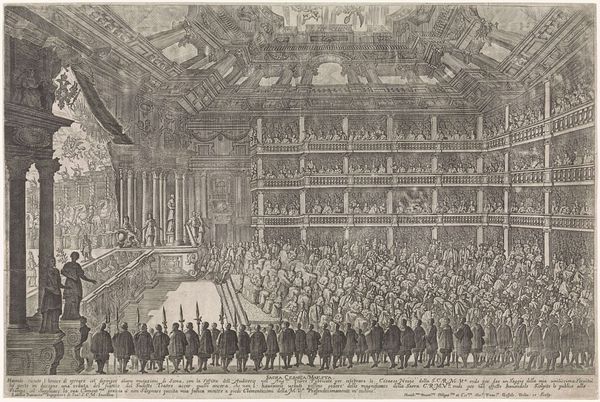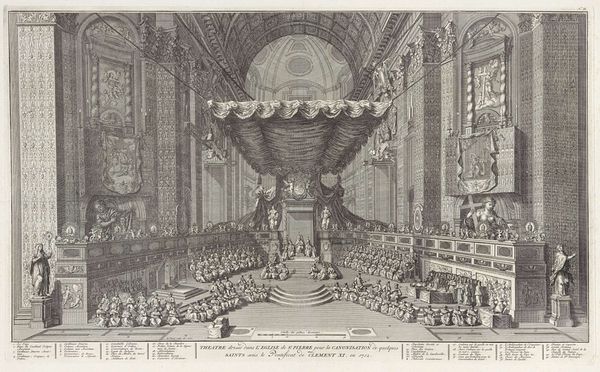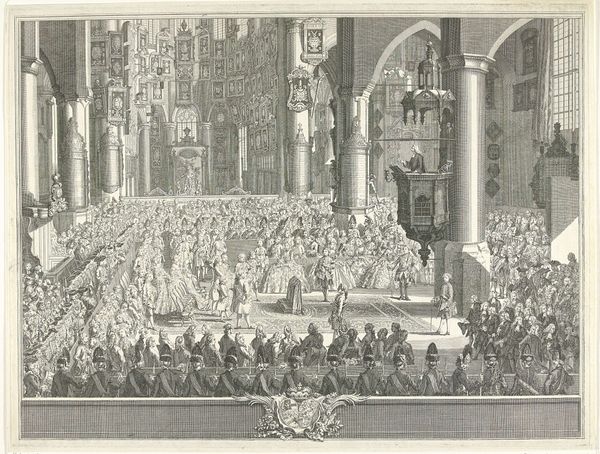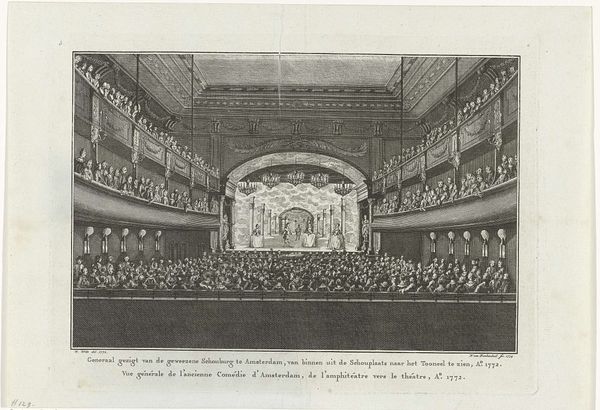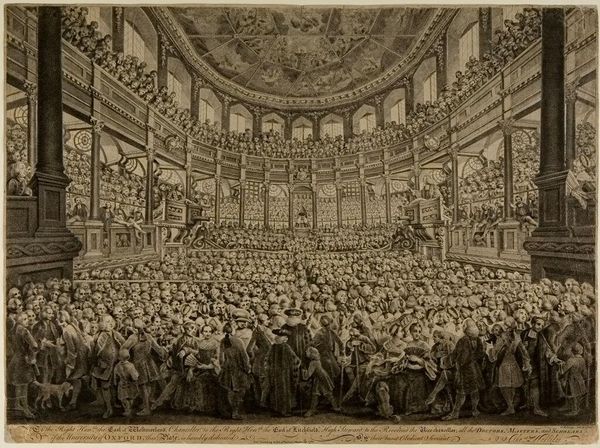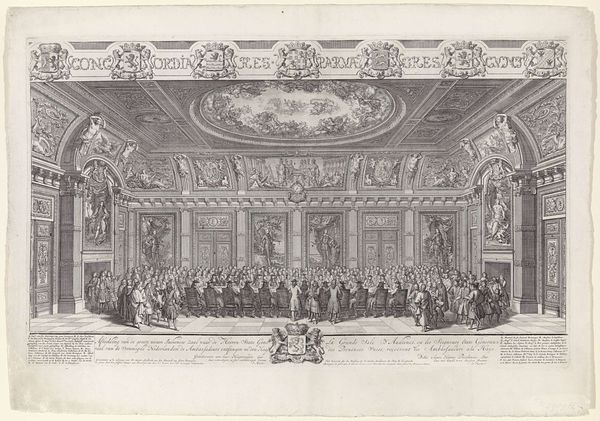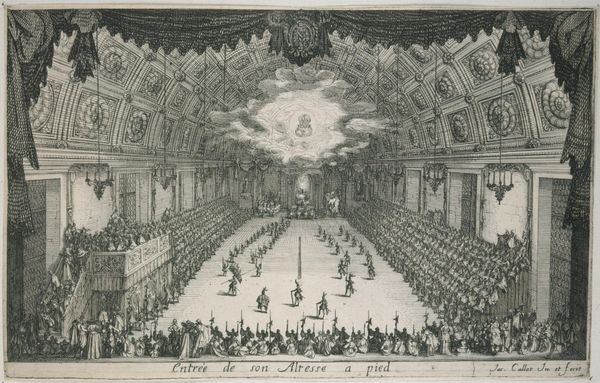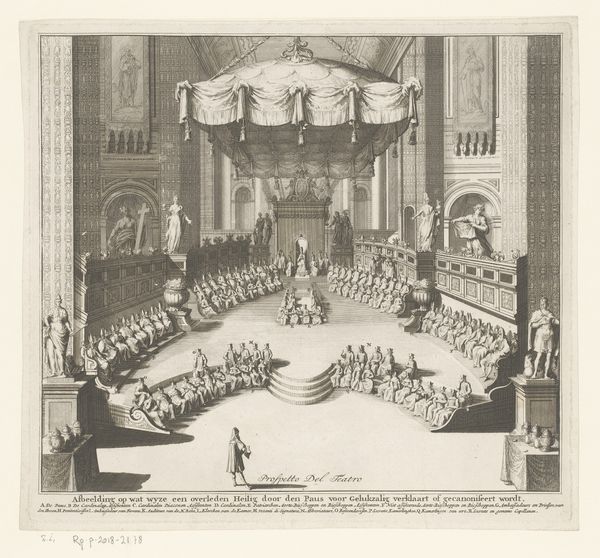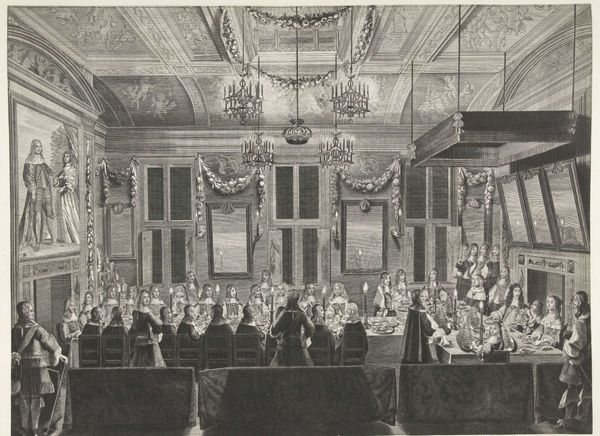
print, etching, engraving
#
baroque
#
pen drawing
# print
#
etching
#
etching
#
cityscape
#
history-painting
#
engraving
Dimensions: height 337 mm, width 503 mm
Copyright: Rijks Museum: Open Domain
Frans Geffels made this etching of an opera performance for Emperor Leopold I in 1668. Etching is a printmaking technique that uses acid to cut into a metal plate, usually copper. The plate is covered with a waxy, acid-resistant substance, through which the artist scratches the design. When the plate is dipped in acid, the exposed metal is eaten away, creating recessed lines. These lines hold ink, which is then transferred to paper under pressure, resulting in a print. Look closely at the image and you'll notice the precision and detail achieved through the etching process. The sharp, clean lines define the architectural grandeur of the theater, the elaborate costumes, and the multitude of figures in attendance. The quality of the line speaks to the etcher’s hand, and the amount of labor needed to produce the plate. The print not only immortalizes the event, but speaks volumes about the intersection of art, power, and social class. It offers insight into the cultural values of the time, showing how making and context come together to expand traditional ideas about art history.
Comments
No comments
Be the first to comment and join the conversation on the ultimate creative platform.
